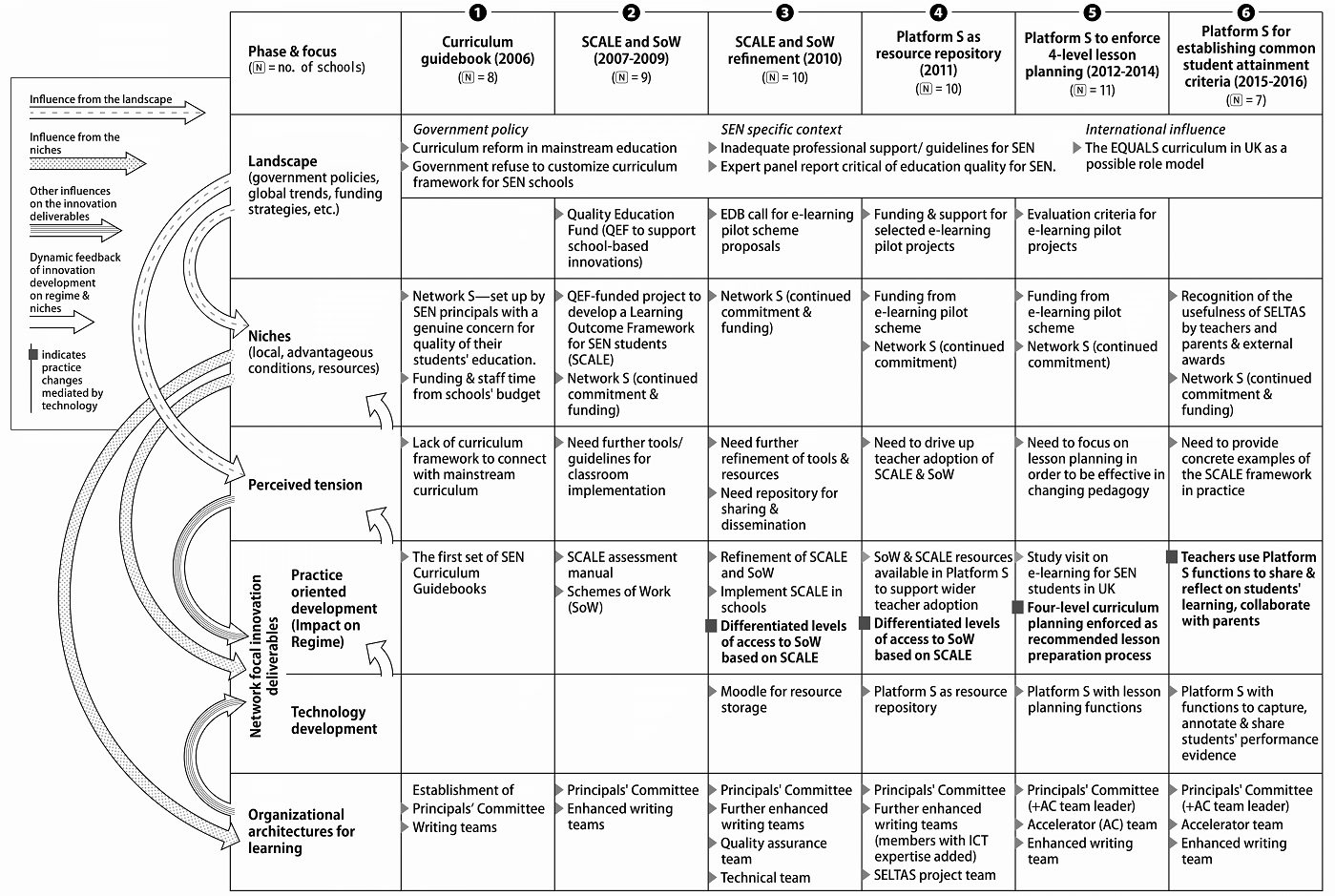研究故事
VP(R)'s Picks: Scaling Up Tech Innovation in the Classroom
上一頁
分享
相關連結
The success of e-learning in schools has more to do with pedagogy than technology, as demonstrated in a Faculty of Education study of 10 special education needs (SEN) schools in Hong Kong that were determined to give their students the same learning opportunities as those in mainstream schools.
Studies in Europe and Asia have shown that technological innovations in schools work best when they are accompanied by teacher training and support across the educational system. A new study by Professor Nancy Law and PhD candidate Leming Liang deepens that understanding by mapping the different external and internal factors needed to support tech-related pedagogy and scale up e-learning innovations.
 Professor Nancy Law
Professor Nancy LawThe scholars studied e-learning adoption by a joint school network of 10 SEN schools in Hong Kong, using the context of their “sociotechnical” system. This system consists of three levels – landscape, regime and niche – which interact to provide resources and drive innovation.
The landscape level is the largest and covers external factors such as the government and economic growth. In this case, government funding for e-learning adoption was made available from 2011-14 and the network of 10 schools used that to develop and implement e-learning to support the innovations they started earlier.
The regime level is where rules are applied to guide actors and activities. The principals of the 10 schools jointly took a leading role to establish e-learning adoption as a goal, co-ordinate activities and appoint senior leaders in the schools to implement change. They also adapted their work as they learned more, for example disbanding the technology team when no longer adequate and adding quality assurance and accelerator teams to provide oversight and leadership on technology development.
The main benefits of these efforts occurred at the classroom, or niche, level where the experimentation took place. Teachers were provided with such things as new core curriculum documents and a new technology platform to make it easier for them to access and use e-learning resources in their lesson plans. The technology platform also provides support to parents to use the e-learning activities and resources with their children at home.
By 2016, seven of the 10 schools were still collaborating and implementing their e-learning programme. However, the fact that three schools had dropped out showed e-learning innovations were still fragile – an outcome consistent with the difficulty of sustaining and escalating innovation.
The authors conclude that the sociotechnical perspective provides a framework for understanding how technology is adopted in schools and the long-term impacts of this.

(Image reproduced/adapted from John Wiley & Sons Ltd under CC BY-NC-ND 4.0: Law N. and Liang L., “Sociotechnical co‐evolution of an e‐Learning innovation network”, British Journal of Educational Technology, 2019, 50 (3), 1340-1353.)




